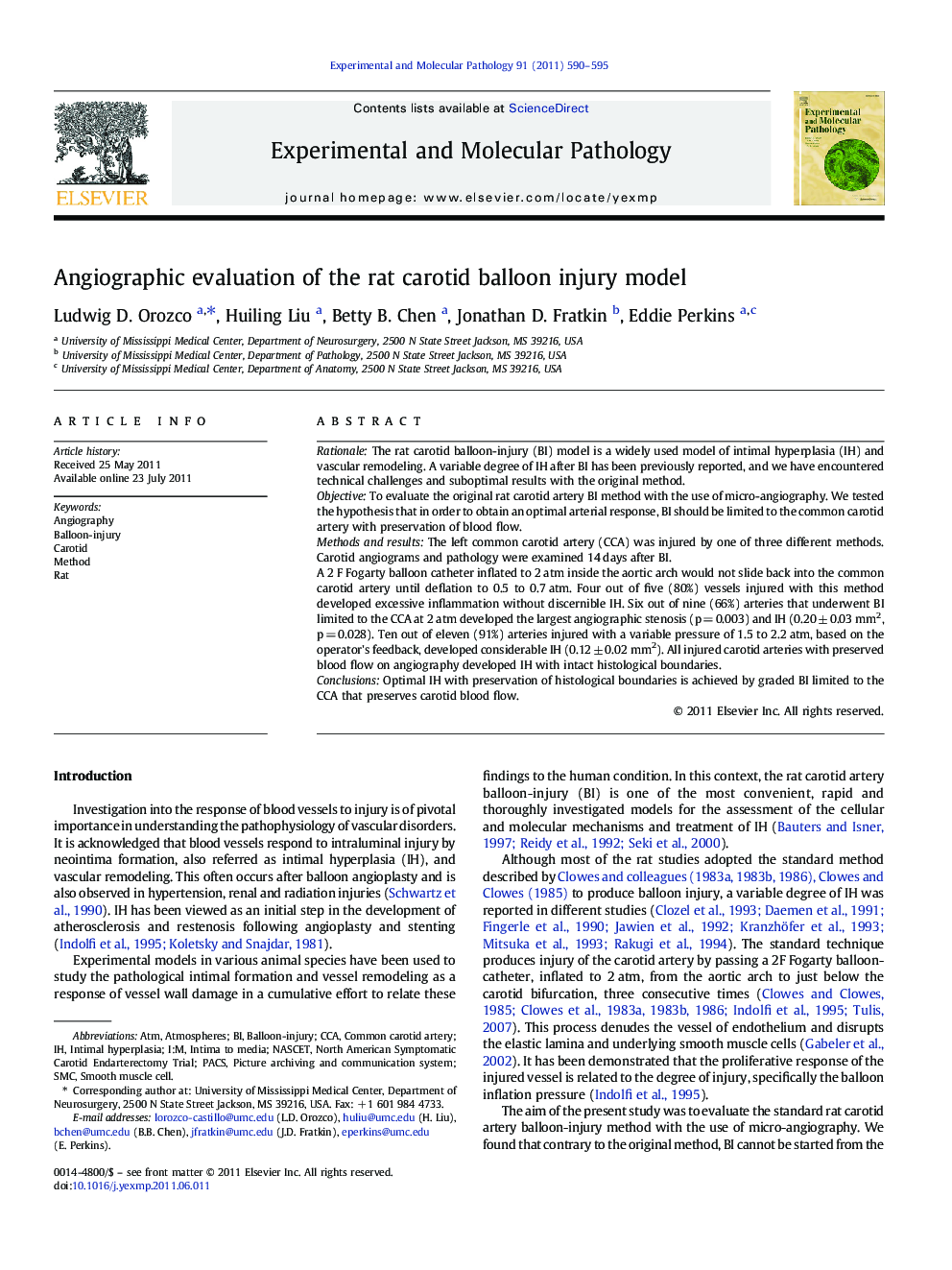| کد مقاله | کد نشریه | سال انتشار | مقاله انگلیسی | نسخه تمام متن |
|---|---|---|---|---|
| 2775257 | 1152318 | 2011 | 6 صفحه PDF | دانلود رایگان |

RationaleThe rat carotid balloon-injury (BI) model is a widely used model of intimal hyperplasia (IH) and vascular remodeling. A variable degree of IH after BI has been previously reported, and we have encountered technical challenges and suboptimal results with the original method.ObjectiveTo evaluate the original rat carotid artery BI method with the use of micro-angiography. We tested the hypothesis that in order to obtain an optimal arterial response, BI should be limited to the common carotid artery with preservation of blood flow.Methods and resultsThe left common carotid artery (CCA) was injured by one of three different methods. Carotid angiograms and pathology were examined 14 days after BI.A 2 F Fogarty balloon catheter inflated to 2 atm inside the aortic arch would not slide back into the common carotid artery until deflation to 0.5 to 0.7 atm. Four out of five (80%) vessels injured with this method developed excessive inflammation without discernible IH. Six out of nine (66%) arteries that underwent BI limited to the CCA at 2 atm developed the largest angiographic stenosis (p = 0.003) and IH (0.20 ± 0.03 mm2, p = 0.028). Ten out of eleven (91%) arteries injured with a variable pressure of 1.5 to 2.2 atm, based on the operator's feedback, developed considerable IH (0.12 ± 0.02 mm2). All injured carotid arteries with preserved blood flow on angiography developed IH with intact histological boundaries.ConclusionsOptimal IH with preservation of histological boundaries is achieved by graded BI limited to the CCA that preserves carotid blood flow.
Antero-posterior (AP) radiographs demonstrate the original balloon-injury technique. Initial left common carotid artery (CCA) angiogram (A) and roadmap (B) show the origin of the CCA at the level of the third rib. A deflated 2F Fogarty balloon catheter is advanced to the aortic arch (C) and inflated to 2 atm (D). The inflated balloon would not pass from the aortic arch into the common carotid artery (E), until deflation to 0.5–0.7 atm (F). Once in the proximal CCA the balloon is inflated to 2 atm (G) and withdrawn by careful traction and rotation toward the carotid bifurcation (H). Occasionally, the catheter will meet resistance where the cervical myo-fascial band comes together at the base of the neck (I). This can be overcome by re-orientation of the balloon catheter.Figure optionsDownload as PowerPoint slideHighlights
► The rat carotid balloon-injury model is widely used in vascular research.
► We encountered technical challenges and suboptimal results with the original method.
► Using angiography we evaluated this technique and its results.
► Contrary to the original method, balloon-injury cannot be started from the aortic arch.
► Optimal results are achieved by graded injury limited to the common carotid artery.
Journal: Experimental and Molecular Pathology - Volume 91, Issue 2, October 2011, Pages 590–595